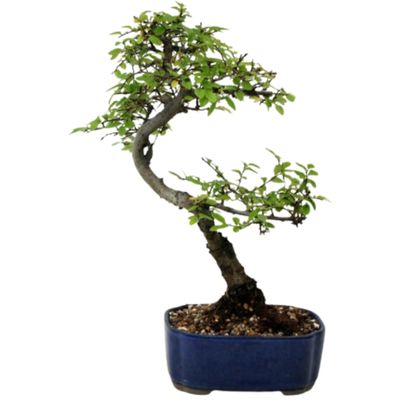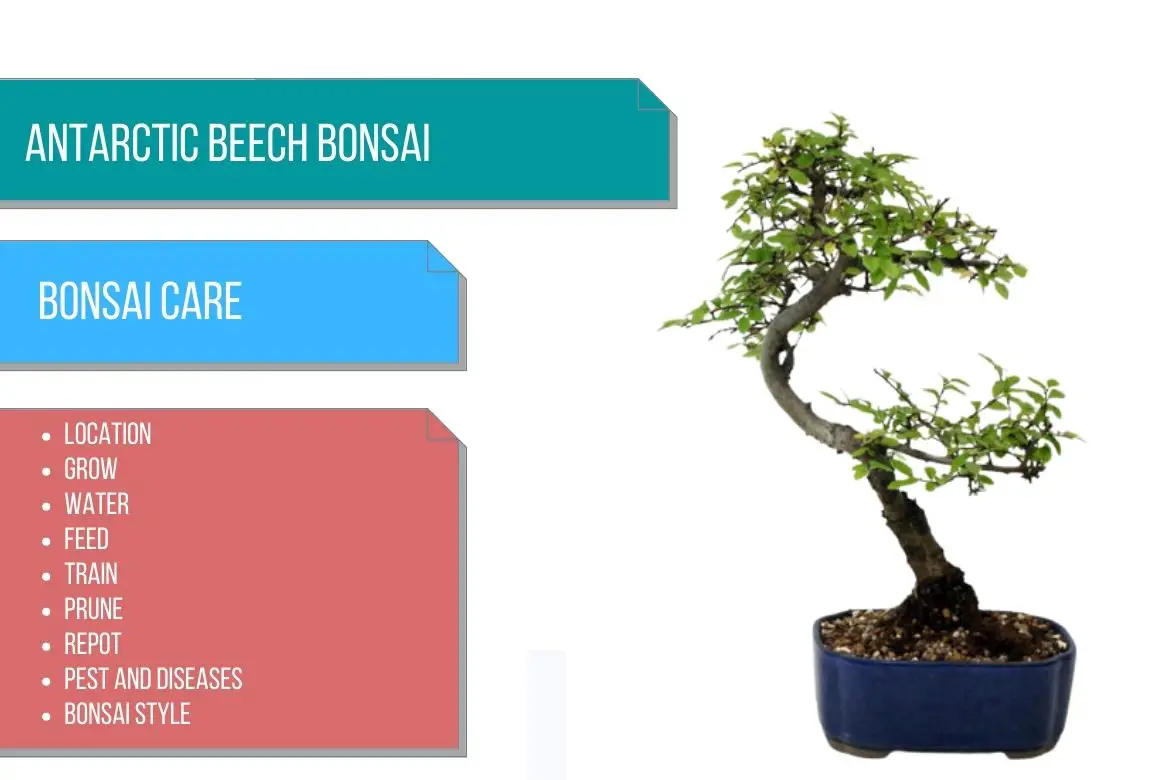
Antarctic beech
(Nothofagus antarctica)
Country of Origin : South America
Bonsai Styles : Informal upright, broom
Zone : 6 – 7
Nothofagus Antarctica (aka False Beech) is a fast-growing tree that can make a very attractive bonsai.
Antarctic beech is a hardy, deciduous tree that can be used to make an attractive outdoor bonsai tree. These are not all that widely available in bonsai nurseries. However, Nothofagus Antarctica bonsai trees are popular among amateur bonsai growers.
It is an easy-to-grow and easy-to-train tree with small round heart-shaped leaves. The alternating, minutely toothed leaves are shiny and medium green in color. The green color of the leaves changes into a beautiful shade of yellowish-orange before the leaves drop in fall.
This tree has a slender trunk with attractive scaly bark. The flaky bark is dark gray in color.
There are other varieties of Nothofagus spp. also that can be used to make bonsai trees:
- Nothofagus obliqua: This tree is also known as Roble beech.
- Nothofagus procera: This tree is also known as Rauli beech.
The care instructions of N. obliqua and N. procera are same as N. Antarctica.
Read more about other bonsai trees species in : Types of bonsai tree
Best location to keep Antarctic beech bonsai tree
You can place the Antarctic beech bonsai tree in full sun or partial shade outdoors in summer.
It is recommended to move bonsai to a frost-free greenhouse or shed during periods of extremely cold weather.
Young bonsai trees should be sheltered from cold, drying winds.
IMP: Refer to do bonsai trees need sunlight for more indoor and outdoor bonsai location ideas. Also, refer sunlight requirements for indoor plants for more indoor gardening ideas.
Propagation of Antarctic beech bonsai tree
Antarctic beech tree can be propagated by Air-layering, cuttings and seed sowing.
Watering Antarctic beech bonsai tree
Throughout the growing season, this species will need regular watering.
Summer can be a dry period for compost, so you may have to water it twice a day to keep it moist.
It is important to keep the bonsai soil just moist in winter.
These trees are also prone to root rot if the soil is waterlogged. This will prove to be fatal for the bonsai. Avoid overwatering. Remember, when in doubt, less water is preferable than more water.
Read watering bonsai tree for more details.
Wiring Antarctic beech bonsai tree
Shoots should only be wired when they have hardened sufficiently. Antarctic beech can be wired at any time of year but spring or early summer should be the best time.
It is not recommended to leave wires on branches for longer than one growing season.
Wires on fine, young branches should be removed before winter.
Read : Detailed guide on How to wire a bonsai. This guide will also tell you what precautions to take while wiring.
Pruning Antarctic beech bonsai tree
When to prune Antarctic beech bonsai tree?
How to prune Antarctic beech bonsai tree?
Pruning can be done at any time of the year. Throughout the growing season, pinch out the growing tips of new shoots.
Because of the small leaves, it is not necessary to stick to the rule of pruning the new shoots back to two or three buds (as opposed to bonsai tree species with large leaves like alder or beech). You can prune the shoots in any way as long as you are able to achieve the desired silhouette of the bonsai tree.
Read how to prune a bonsai to know about the right technique of pruning and more about defoliating a bonsai tree.
Repotting Antarctic beech bonsai tree
When to repot Antarctic beech bonsai tree?
Young Antartic beech bonsai tree should be repotted every year. Mature bonsai trees older than 5 years can be repotted every second year.
Early spring is a good time to repot the tree.
In the year when you are repotting the tree, perform heavy pruning of the tree just before the new buds are about to open.
Pot the Antartic beech bonsai in a deep container.
Use moisture-retentive, free-draining bonsai soil. The soil should be lime free. Too much lime in the soil will cause the leaves to become chlorotic. The leaves will turn yellow and die.
Please check out how to repot a bonsai to know everything about repotting and root pruning a bonsai.
Must Read: Bonsai Soil Recipes
Must read : Choosing the right bonsai container
Feeding Antarctic beech bonsai tree
In the spring, apply a general fertilizer, and then in the late summer, switch to a low-nitrogen fertilizer.
Read more about bonsai fertilizer and its application.
Diseases and pest of Antarctic beech bonsai tree
There are very few pests and diseases that bother these plants. Caterpillars can pose some issues sometimes. Remove by hand and apply the appropriate insecticide.
Our comprehensive guide: How to identify and treat bonsai pests and diseases is a great resource for you to see all the organic and inorganic remedies you can use.

